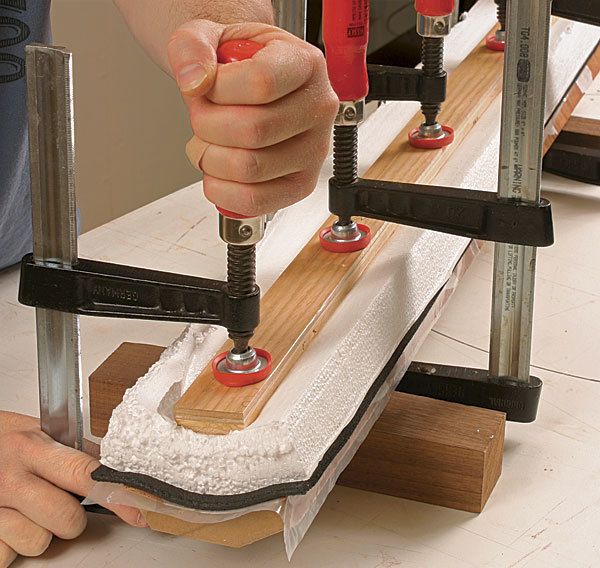Veneering Tight Curves
Use a vacuum bag, veneer, Styrofoam, plastic sheeting, and neoprene rubber to flawlessly veneer coves, half-rounds, and quarter-rounds
Synopsis: Learn Craig Thibodeau’s method for veneering the tight curves such as those found on his furniture designs. Using a vacuum bag, veneer, Styrofoam, plastic sheeting, and neoprene rubber, his method will result in flawlessly veneered coves, half-rounds, and quarter-rounds.
My clients prefer figured or exotic woods that aren’t readily available as lumber, so I do a lot of veneering. Luckily, I enjoy the creative freedom this gives, allowing me to run the grain in eyecatching directions—around curves, for example. when I started out, I found any number of articles on how to veneer flat or gently curved panels for doors and tabletops, but not much on the tighter curves I saw in my mind’s eye. So I forged ahead, mixing and matching techniques I found in various places. In this article I’ll show how I veneer coves, half-rounds, and quarter-rounds.
The tools and methods are well within the reach of an ambitious amateur. you’ll need a vacuum bag, veneer (the thin, commercial kind), white Styrofoam insulation (available at home centers), plastic sheeting, and neoprene rubber (mcmaster.com; no. 9455k46). I use the foam both as a clamping caul and to make flexible sanding blocks for smoothing substrates and the veneered surface. I use Titebond I for outside curves; it cures within hours. But it allows too much creep for coves. For those I use unibond 800, a twopart urea-formaldehyde-based glue (available from Vacuum Pressing Systems; vacupress.com). It allows more open time, creates a very rigid glueline, and cures within 24 hours. wear a proper respirator, not a dust mask, to protect yourself from the formaldehyde fumes. I use MDF for the substrate because it is stable in all directions and it creates a dead-flat surface.
My veneer tape of choice is thin, 2-in.-wide “water gum” tape (dilegnosupply.com). It comes off easily when dampened and allowed to soften for a minute or so. I use it to assemble joints and to reinforce veneer on outside curves, where it keeps the veneer flexible and prevents splintering. I also used it on the cove veneers in this article, which have vertical grain and had to be assembled from multiple pieces.
From Fine Woodworking #212
For the full article, download the PDF below:
Fine Woodworking Recommended Products

Bahco 6-Inch Card Scraper

Whiteside 9500 Solid Brass Router Inlay Router Bit Set





















Log in or create an account to post a comment.
Sign up Log in